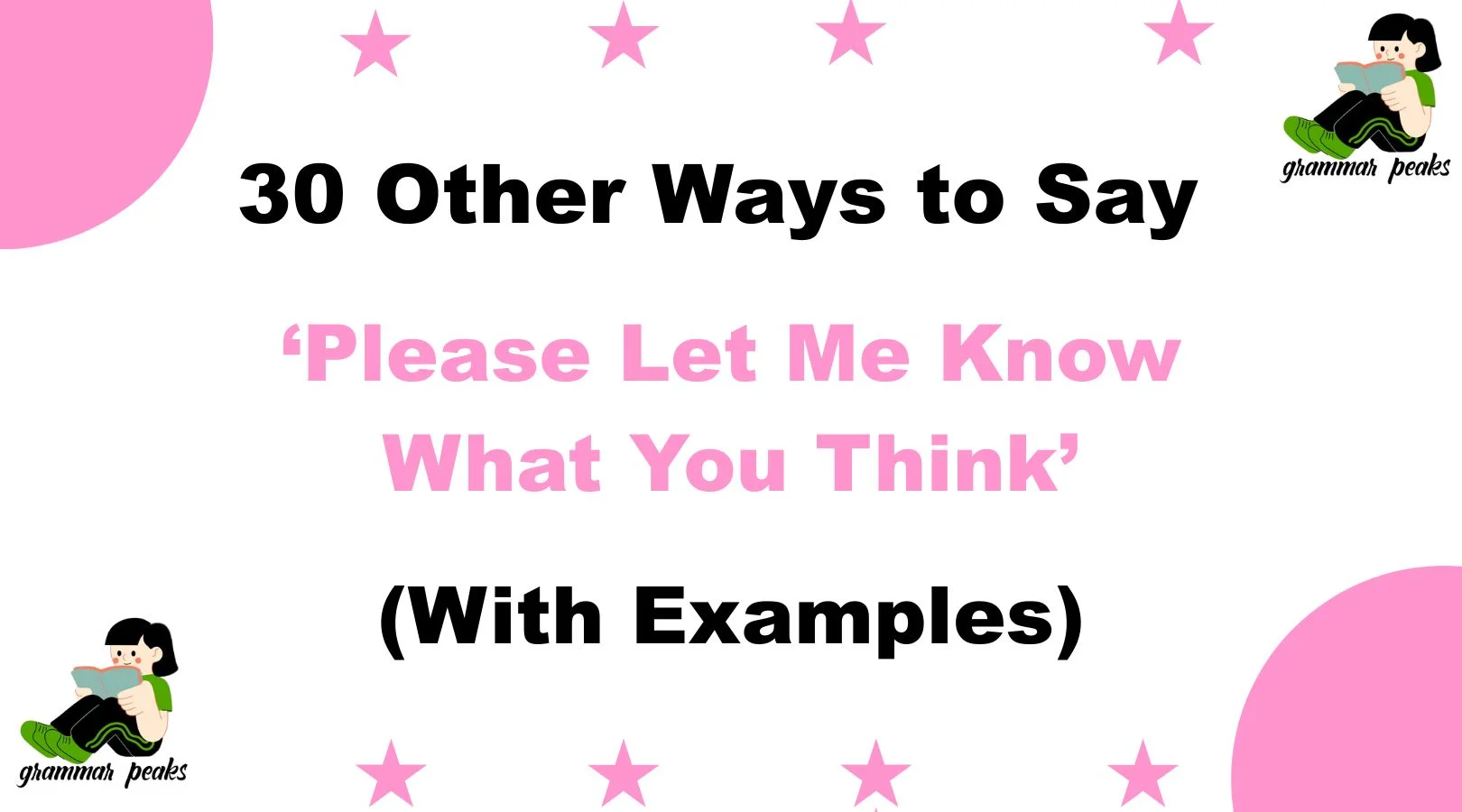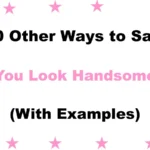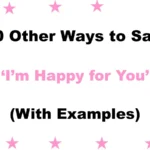Finding the right words to invite feedback or opinions can truly shape how your message is received. Saying “Please let me know what you think” is clear, but sometimes, a little variety can make your communication feel more personal, warm, and thoughtful. Using alternative expressions not only refreshes your language but also shows you care deeply about the other person’s input.
This guide will share 30 heartfelt and professional ways to ask for feedback, along with practical examples and usage tips. Whether you’re writing an email, texting a friend, or leading a team meeting, these alternatives can help your requests come across as genuine, polite, and engaging.
What Does “Please Let Me Know What You Think” Mean?
The phrase “Please let me know what you think” is a polite and respectful way to ask someone for their opinion or feedback. It shows that you value their perspective and are open to hearing their thoughts before making a decision or moving forward.
This expression is commonly used in both professional and personal settings to encourage open communication. It also helps build trust and collaboration, making the other person feel included and appreciated.
When to Use “Please Let Me Know What You Think”
Use this phrase when you want to:
- Invite honest feedback on ideas, plans, or work
- Encourage open communication in professional or casual settings
- Show respect for others’ perspectives before making decisions
- Foster collaboration or teamwork
Is It Professional/Polite to Say “Please Let Me Know What You Think”?
Yes! It’s widely considered polite and professional. However, depending on the tone and relationship, you might want to tailor your wording to sound more formal, friendly, or casual—which is where alternative phrases come in handy.
Pros and Cons of Saying “Please Let Me Know What You Think”
Pros:
- Clear and direct
- Polite and respectful
- Encourages open dialogue
Cons:
- Can sound repetitive if overused
- May feel generic or less personal
- Sometimes too formal for casual conversations
Synonyms for “Please Let Me Know What You Think”:
- I’d love to hear your thoughts
- What’s your take on this?
- Please share your feedback
- I’m eager to know your opinion
- Let me know your perspective
- I appreciate your input
- Could you tell me what you think?
- Your thoughts would be appreciated
- I’m interested in your view
- Feel free to share your ideas
- Let me know what you make of this
- What do you think about this?
- I welcome your feedback
- Please advise
- How does this look to you?
- I’d like to get your opinion
- Let me know your take
- What’s your opinion?
- I’m looking forward to your thoughts
- Please weigh in
- Can I get your feedback?
- I’d appreciate your thoughts
- I want to hear from you
- What are your thoughts?
- Tell me what you think
- Please let me hear your ideas
- I’m all ears for your opinion
- Could you share your perspective?
- Looking forward to your input
- What’s your feedback?
1. I’d Love to Hear Your Thoughts
Definition: An inviting and warm request for someone’s opinion.
Explanation: This phrase expresses genuine interest in the other person’s views and feelings.
Scenario Example: “I’m considering new design options for the website—I’d love to hear your thoughts.”
Best Use: Friendly emails, informal conversations, team collaboration.
Worst Use: Overly formal settings where a more official tone is required.
Tone: Warm, engaging, and respectful
2. What’s Your Take on This?
Definition: A casual way to ask for someone’s opinion.
Explanation: “Take” implies a personal perspective or stance.
Scenario Example: “We have two marketing strategies—what’s your take on this?”
Best Use: Casual professional discussions, brainstorming sessions.
Worst Use: Very formal written communication.
Tone: Friendly and conversational
3. Please Share Your Feedback
Definition: A polite and formal request for input.
Explanation: “Feedback” is straightforward and often used in business contexts.
Scenario Example: “After reviewing the report, please share your feedback.”
Best Use: Business emails, project reviews.
Worst Use: Casual texts or informal chats.
Tone: Formal and professional
4. I’m Eager to Know Your Opinion
Definition: Shows enthusiasm to hear someone’s viewpoint.
Explanation: “Eager” conveys active interest and value.
Scenario Example: “I’m eager to know your opinion on the proposed budget changes.”
Best Use: Collaborative work environments or close colleagues.
Worst Use: When sounding neutral or distant is preferred.
Tone: Enthusiastic and respectful
5. Let Me Know Your Perspective
Definition: A thoughtful request emphasizing a broader viewpoint.
Explanation: “Perspective” indicates interest in someone’s unique or overall view.
Scenario Example: “Before finalizing the plan, let me know your perspective.”
Best Use: Strategy meetings, team feedback.
Worst Use: Informal chats or casual conversations.
Tone: Professional and considerate
6. I Appreciate Your Input
Definition: A warm way to invite thoughts while showing gratitude.
Explanation: This phrase combines a request with appreciation, creating a respectful tone.
Scenario Example: “Before we move forward, I appreciate your input on the layout.”
Best Use: Team reviews, design collaboration, feedback sessions.
Worst Use: When you want critical or detailed analysis only.
Tone: Grateful and professional
7. Could You Tell Me What You Think?
Definition: A polite, conversational request for feedback.
Explanation: This phrase is direct yet soft, inviting honest responses.
Scenario Example: “Here’s the plan—could you tell me what you think?”
Best Use: One-on-one meetings or peer input.
Worst Use: Too informal for official reports.
Tone: Friendly and open
8. Your Thoughts Would Be Appreciated
Definition: A formal yet warm way to request feedback.
Explanation: The phrase is respectful and emphasizes value in the other person’s input.
Scenario Example: “As we finalize the strategy, your thoughts would be appreciated.”
Best Use: Leadership communication, strategic planning.
Worst Use: Text messages or highly casual settings.
Tone: Respectful and polished
9. I’m Interested in Your View
Definition: Shows curiosity and respect for another’s opinion.
Explanation: Highlights thoughtful engagement with another’s ideas.
Scenario Example: “I’m interested in your view on how we approach this challenge.”
Best Use: Strategic discussions, brainstorming, opinion gathering.
Worst Use: Performance feedback situations.
Tone: Sincere and professional
10. Feel Free to Share Your Ideas
Definition: Encouraging, non-restrictive invitation for input.
Explanation: Suggests openness and creativity without pressure.
Scenario Example: “We’re in the early stages—feel free to share your ideas.”
Best Use: Early planning, team collaboration.
Worst Use: Formal evaluations or high-stakes decision points.
Tone: Casual and creative
11. Let Me Know What You Make of This
Definition: Invites interpretation and personal take.
Explanation: Slightly informal and conversational—great for honest dialogue.
Scenario Example: “Here’s the draft—let me know what you make of this.”
Best Use: Peer reviews, drafts, early project stages.
Worst Use: High-level executive briefings.
Tone: Relaxed and collaborative
12. What Do You Think About This?
Definition: A clear, classic question for feedback.
Explanation: Simple, direct, and effective in nearly any setting.
Scenario Example: “I’ve proposed a few changes—what do you think about this?”
Best Use: General communication, any setting.
Worst Use: None—it’s very versatile.
Tone: Neutral and polite
13. I Welcome Your Feedback
Definition: A formal and respectful phrase.
Explanation: Suggests openness to constructive criticism or suggestions.
Scenario Example: “Before publishing, I welcome your feedback.”
Best Use: Client communications, formal emails, report sharing.
Worst Use: Texts or quick team chats.
Tone: Polished and respectful
14. Please Advise
Definition: A concise, professional request for guidance.
Explanation: Often used in business writing when action or decision is needed.
Scenario Example: “I’m unsure of the next step—please advise.”
Best Use: Professional correspondence, formal requests.
Worst Use: Friendly or casual conversations.
Tone: Formal and clear
15. How Does This Look to You?
Definition: A friendly way to check visual or content impressions.
Explanation: It gently invites feedback, especially for visuals, designs, or plans.
Scenario Example: “Here’s the first draft—how does this look to you?”
Best Use: Design feedback, visual reviews.
Worst Use: Complex decision-making scenarios.
Tone: Friendly and open
16. I’d Like to Get Your Opinion
Definition: A personal and direct way to ask for someone’s take.
Explanation: Shows the speaker values the recipient’s voice.
Scenario Example: “Before I present this, I’d like to get your opinion.”
Best Use: Team input, shared decision-making.
Worst Use: None—very adaptable.
Tone: Personal and respectful
17. Let Me Know Your Take
Definition: A casual, conversational phrase.
Explanation: It encourages the person to share their unique angle.
Scenario Example: “We’re split on this—let me know your take.”
Best Use: Peer discussions, project collaboration.
Worst Use: Corporate-level communication.
Tone: Casual and direct
18. What’s Your Opinion?
Definition: A direct and respectful invitation.
Explanation: Great for encouraging open sharing.
Scenario Example: “We’ve heard from others—what’s your opinion?”
Best Use: Discussions, interviews, feedback rounds.
Worst Use: When the answer should already be known.
Tone: Straightforward and sincere
19. I’m Looking Forward to Your Thoughts
Definition: Shows anticipation and respect for someone’s input.
Explanation: Signals that you genuinely care about the response.
Scenario Example: “Thanks again—I’m looking forward to your thoughts.”
Best Use: Email follow-ups, after proposals.
Worst Use: Quick text exchanges.
Tone: Warm and professional
20. Please Weigh In
Definition: Invites someone to contribute their opinion, especially in a group.
Explanation: Often used in meetings or email threads.
Scenario Example: “Everyone has shared their ideas—please weigh in when you can.”
Best Use: Group collaboration, decision-making.
Worst Use: One-on-one emotional discussions.
Tone: Inclusive and neutral
21. Can I Get Your Feedback?
Definition: A friendly request for someone’s thoughts.
Explanation: It sounds open, approachable, and professional.
Scenario Example: “Can I get your feedback on this presentation deck?”
Best Use: Any project or creative review.
Worst Use: None—it’s widely accepted.
Tone: Positive and collaborative
22. I’d Appreciate Your Thoughts
Definition: Adds a note of gratitude to a feedback request.
Explanation: It sounds kind, polite, and considerate.
Scenario Example: “I’d appreciate your thoughts before I submit it.”
Best Use: Professional conversations, peer feedback.
Worst Use: When firm direction is needed.
Tone: Grateful and sincere
23. I Want to Hear from You
Definition: Emphasizes the importance of the recipient’s voice.
Explanation: Makes it clear their opinion matters.
Scenario Example: “Before we finalize, I want to hear from you.”
Best Use: Empowering teammates or partners.
Worst Use: Corporate memos or formal letters.
Tone: Empowering and thoughtful
24. What Are Your Thoughts?
Definition: A general, respectful way to seek input.
Explanation: It works in most professional and informal settings.
Scenario Example: “I’ve drafted some ideas—what are your thoughts?”
Best Use: Brainstorming, feedback discussions.
Worst Use: None—it’s versatile.
Tone: Friendly and balanced
25. Tell Me What You Think
Definition: A direct and confident way to ask for thoughts.
Explanation: Casual, clear, and straightforward.
Scenario Example: “This proposal is a bit different—tell me what you think.”
Best Use: Informal chats, creative reviews.
Worst Use: Very formal meetings.
Tone: Casual and confident
26. Please Let Me Hear Your Ideas
Definition: A kind request for suggestions or creative thinking.
Explanation: Encourages openness and contribution.
Scenario Example: “We’re at a crossroads—please let me hear your ideas.”
Best Use: Group discussions, early-stage planning.
Worst Use: Strict policy or legal topics.
Tone: Encouraging and inclusive
27. I’m All Ears for Your Opinion
Definition: Very casual and inviting.
Explanation: Uses an idiom to create a friendly tone.
Scenario Example: “I’m all ears for your opinion on this logo.”
Best Use: Friendly brainstorming, creative reviews.
Worst Use: Serious or sensitive conversations.
Tone: Playful and engaging
28. Could You Share Your Perspective?
Definition: Highlights respect for a person’s unique viewpoint.
Explanation: Great for thoughtful or complex issues.
Scenario Example: “You’ve been through this before—could you share your perspective?”
Best Use: Strategic discussions, conflict resolution.
Worst Use: Simple yes/no decisions.
Tone: Respectful and thoughtful
29. Looking Forward to Your Input
Definition: Indicates future engagement and appreciation.
Explanation: Encourages thoughtful responses by showing anticipation.
Scenario Example: “Here’s the draft—looking forward to your input.”
Best Use: Emails, proposals, collaborative efforts.
Worst Use: Instant decisions or short replies.
Tone: Polite and future-focused
30. What’s Your Feedback?
Definition: A direct request for review or response.
Explanation: Clearly asks for constructive input.
Scenario Example: “Before I finalize this, what’s your feedback?”
Best Use: Review processes, project planning.
Worst Use: Emotional discussions.
Tone: Direct and professional
Conclusion
Using the phrase “Please let me know what you think” is a polite and respectful way to invite someone’s feedback—but with so many ways to express the same sentiment, your words can become more personal, memorable, and aligned with your tone. Whether you’re communicating professionally, casually, or creatively, choosing the right alternative can help you build trust, foster collaboration, and show genuine interest in the other person’s opinion.
This list of 30 thoughtful alternatives gives you the flexibility to sound more sincere, more human, and better tailored to your audience—without sounding repetitive or generic. From “I’d love to hear your thoughts” to “Could you share your perspective?” Each phrase empowers you to connect more meaningfully and encourages open communication.
Keep this list close for your emails, chats, proposals, and creative exchanges—it’s a simple way to make your language more engaging, empathetic, and effective.
FAQs
1. Why should I use alternatives to “Please let me know what you think”?
Using alternatives helps your message feel fresh, personal, and more targeted to the relationship or context. It shows you’re thoughtful and intentional in how you communicate.
2. Are these phrases professional enough for workplace communication?
Yes—many of these phrases are perfectly suited for professional settings, while others are better for casual or creative conversations. Choose based on tone, audience, and intent.
3. Can I use these alternatives in emails or formal documents?
Absolutely. Phrases like “I welcome your feedback” or “Your thoughts would be appreciated” are ideal for formal writing, while others like “Let me know your take” suit a more relaxed tone.
4. What’s the best way to choose the right alternative?
Consider your tone, the relationship with the recipient, and the urgency or type of feedback you need. If you want a detailed review, use something like “Could you share your perspective?”; if you want a quick opinion, try “What’s your take?”
5. Can these expressions be used in personal conversations too?
Definitely! These alternatives work just as well in texts, social messages, or even spoken conversations. Use “I’m all ears for your opinion” or “Feel free to share your ideas” in casual settings.

Mia Rose is a passionate Language Coach and Contributor at GrammarPeaks, where she specializes in practical grammar tips and language learning strategies. With a strong foundation in education and communication, Mia brings a friendly, approachable style to her writing. Her goal is to make complex grammar rules simple and usable for learners at any level, helping them grow in both confidence and fluency.





